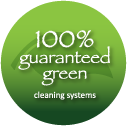HEALTH ROBBERS REPORT
Chlorine Bleach
Most of us have been raised to reach for the bleach when it comes to brightening white clothes, stain removal, disinfecting objects in our homes—including children’s toys—and cleaning dirty floors and surfaces. Of course, bleach achieves these seemingly harmless goals; however, it doesn’t stop there. While bleach may get your clothes looking bright, it can paint a pretty dingy picture when it comes to your health.
Bleach is considered a chlorine-based corrosive substance—and the label should tell you so. Even bleach that has been diluted can cause skin burns and irritation and damage other home surfaces. Since this chemical is powerful enough to kill even the worst bacteria, it makes sense that it poses a danger to those who use it, and to anyone exposed to it.
Bleach is particularly harmful to infants, young children and pets because their immune systems cannot fight off the harsh chemicals. Exposure to bleach can irritate the nose, eyes, skin, and lungs. Serious side effects of using bleach can include respiratory problems, skin burns, damage to the nervous system, asthma flares, extreme headaches, migraines, and vomiting. The most serious hazard of bleach to our bodies is that when mixed with ammonia, vinegar, or any other acid type cleaning material, it can cause dangerous, toxic fumes to be emitted into the air. These toxins can cause serious, sometimes deadly, side effects when inhaled. Bleach is toxic to people, animals and our environment.
Bleach is a known contributor to water pollution. When bleach makes its way into our water system, it reacts with other minerals and elements to create a host of dangerous toxins that can take many years to dissipate. Dioxin is just one of the most dangerous by-products of bleach and chlorine-based cleaning supplies—and it is the most frightening of all since dioxins do not break down and remain in our environment for many years. Researchers believe that dioxin can contribute to cancer, endocrine disorders, and other serious health problems; including the ability to mimic human hormones and can cause low sperm count, testicular and breast cancer. Just think of the hazards these chemical can pose to air quality and our precious wildlife.
The Occupational Safety and Health Administration has banned the use of bleach in restaurants, schools, and hospitals, because of all the hazards. We should be doing the same thing in our homes. In other words, bag the bleach!
Reach instead for earth-friendly alternatives to do the jobs without the dangers. Try baking soda (or washing soda), vinegar or hydrogen peroxide for cleaning. Other options include lemon juice and oil, borax, and sodium hydrosulfite (salt and water). Each of these time-tested, simple ingredients can whiten and clean your clothes, floors, and surfaces the same way bleach can without the environmental and health hazards.




